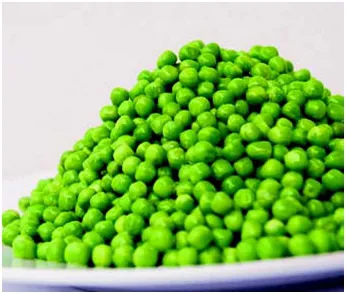I was going to write a blog on food waste at Christmas, but it is Easter already and the egg shaped environmental hazard is filling our shops and homes. Over packaged, sugar packed processed eggs are everywhere and seem to get cheaper every year. This means the grandparent’s pensions buy more eggs. Obviously I have to save the kids health by eating the majority of the eggs myself, and the recycling bin is also full of packaging.
So it got me thinking about a positive food story, and I thought I would write about the humble frozen pea and what it can teach us about food production, waste and packaging.
Frozen pea product sales exceed all other vegetable categories except for potatoes. Sure, frozen peas have their own environmental impacts such as the energy used in freezing the pea and the higher energy cost of chilled distribution. But in terms of food waste the mighty frozen pea is a fast-food success story. It is also packaged in a very efficient way.
Farmers grow peas as a rotation crop (meaning they can’t grow them every year) because they are nitrogen fixing and add-back nutrients to the soil for subsequent crops. To avoid waste and crop deterioration peas must be harvested within a specific time window and frozen within a few hours (you’ve seen the ad right?).
To ensure crops are harvested quickly farmers and the pea freezers need to work in a coordinated way. Farmers plant crops on agreed dates so Mr Birds Eye (or other branded pea producer!) can harvest the crops day after day rather than having 2000 hectares ready on one day. This level of coordination is key to getting a good product, and avoids wasted crops and we should learn from this. Compare this to the horror stories in the press about the large supermarkets changing orders at the last minute.
In addition to avoiding whole-crop waste the frozen pea process also avoids production waste. Peas are podded in the field as they are harvested so all of the pod and vine waste is recycled back to enrich the soil. Compare this with a fresh pea which will have travelled several miles in its pod and then the pod is removed by you at home and then (if its lucky) put in a food recycling bin. The food waste then transported by road to be recycled. 40% of a pea is pod and it is much better to leave this in the field and let nature do the rest.
So far the pea is looking heroic, but we would struggle to get them home if they were sold loose from the freezer! But the packaging around a frozen pea is very minimal and pretty efficient. Peas are bagged (as we all know) and then stacked in card boxes for delivery to shops. Most shops now recycle their cardboard so the only packaging that gets into the 22 million UK homes is a small amount of plastic bag weighing only a few grams. Very efficient and a lot less than an Easter Egg!
The final lesson to learn from the frozen pea is the amount of food thrown away by households due to it being ‘out of date’ or due to poor portion control.
Frozen peas last a long time and people worry less about use by dates on frozen food (especially veg). Portion control is much easier with a frozen pea because they can be poured out as required and the bag easily resealed. So there is less waste when cooked, unlike the fresh pea, or Easter Egg.
Frozen peas are also a very good source of vitamin K, manganese, dietary fiber, vitamin B1, copper, vitamin C, phosphorus, and folate.
Put simply, I love the pea. It’s an excellent learning example to reduce food waste throughout the supply chain.



